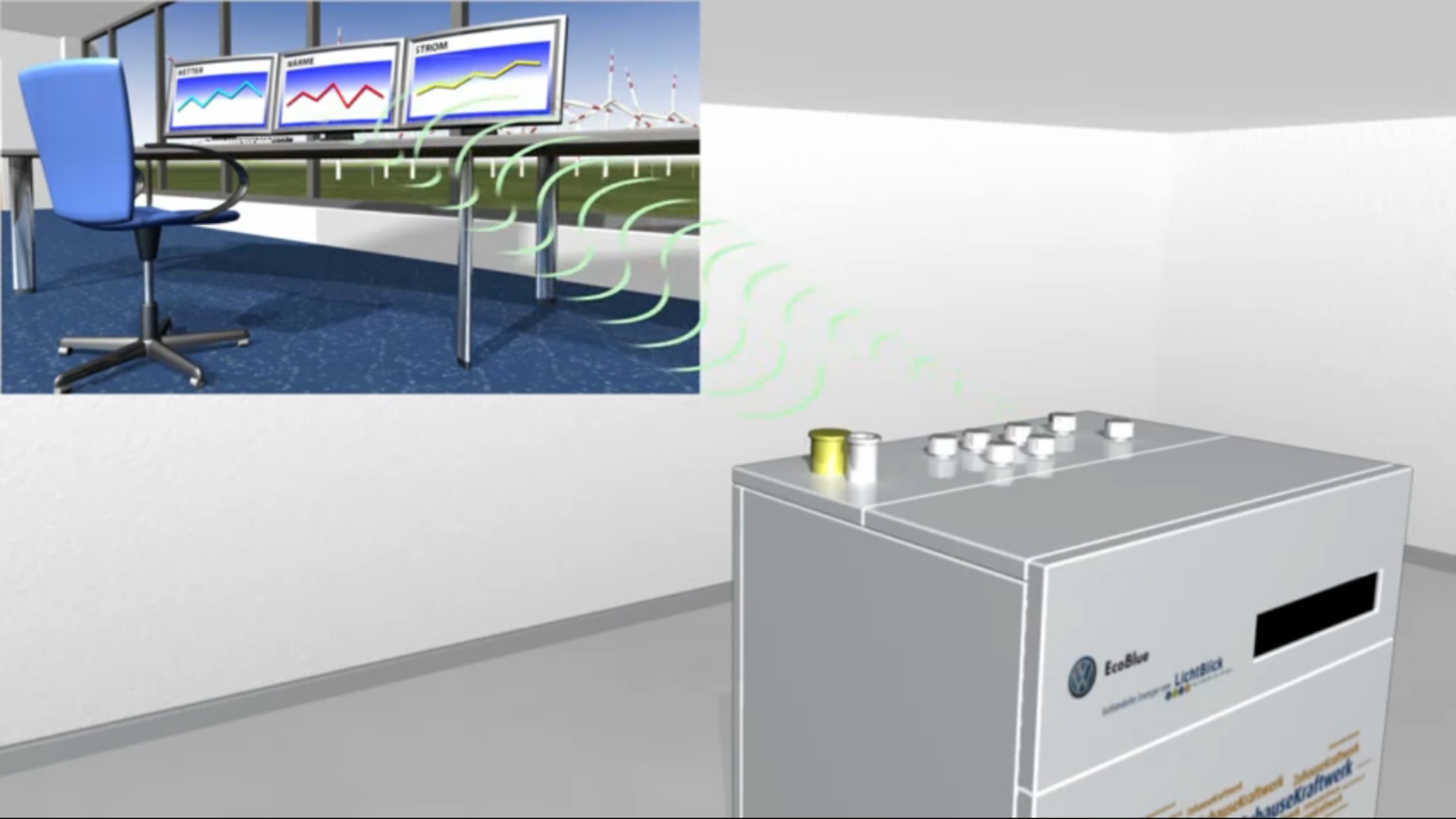This is a great article. Although I feel that North America is at least a decade from 'encouraging' such policies that will allow for this type of equipment, as we are continually dependent on foreign oil, and our policy makers are content with that because of the finanical ties they all seem to have to oil companies. It's such a shame that we live and die in a country where money is more important than good and healthy energy policies.
Blog Post
Making Renewable Energy Work Better: "Swarm Power" Cogeneration
There's a lot of talk about how renewable energy like solar and wind can't ramp up to meet our energy needs. What we need are creative solutions to that challenge, like distributed cogeneration.

I just got off the phone with Ralph Kampwirth, at LichtBlick in Germany, who told me about a system his company now has up and running to provide power to the grid exactly when it's most needed, while at the same time providing cheaper heat and hot water to German homes.
While we don't like to tease our readers too much with products you just can't get here, sometimes it's heartening to see what's possible if creative minds, engineering, and policy come together. This is the case with LichtBlick's EcoBlue CHP system.
Free, grid-tied heat and power
EcoBlue natural-gas-powered combined heat and power (CHP) cogeneration plants were developed through a partnership between Volkswagen and LichtBlick, and are produced by Volkswagen exclusively for LichtBlick. LichtBlick installs the units in homes, where they provide 100% of heat and hot water while supplying power to the grid. LichtBlick maintains ownership of the system, takes care of all of the maintenance, and controls each unit's operation wirelessly from a central location.
GreenSpec has long looked at cogeneration (CHP) systems that work at the single-building scale because the efficiency benefits from using the heat generated from power production are dramatic; Volkswagen estimates the EcoBlue provides 40% energy savings over conventional, separate, heat and power production.
However, most of these systems are designed to operate whenever there is a need for heat, with electricity either used locally or returned to the grid when it's produced. LichtBlick's "SchwarmStrom" or "Swarm Power" plan reverses that. According to Kampwirth, "It's easy to store heat and expensive to store electricity, so we run the CHP system when electricity is needed and store heat in water."
Cogeneration for demand-response
LitchBlick runs each unit for the number of hours needed to ensure the hot water storage system can provide 100% of heat and hot water needs. That's the way most building-scale CHP systems operate.
SUPPORT INDEPENDENT SUSTAINABILITY REPORTING
BuildingGreen relies on our premium members, not on advertisers. Help make our work possible.
See membership options »What's different is that the LitchBlick central office uses wireless control to time each unit's operation for the hours when they anticipate the highest demand (and highest price) on the electricity market. The market price on the German electricity exchange varies every 15 minutes. Right now, LitchBlick interprets the pricing data from one day to assess when to operate each unit the next day, which works pretty well, although according to Kampwirth, they're already looking into systems that will allow more real-time control.
Scaling cogeneration to the megawatt level
It's this approach that makes LitchBlick's model a breakthrough for increasing the percentage of renewable energy in the grid: it makes for a scalable, distributed power supply that can provide for peak power needs and balance the irregularly generated power provided by renewable energy systems like solar and wind. This works much the same way that we hope the smart grid will eventually work with demand-response in the U.S.
LitchBlick's goal is to ultimately install 100,000 units in Germany, which according to LitchBlick would produce 2,000 MW of electricity--what LitchBlick describes as the capacity of two nuclear power plants. Right now LitchBlick has 400 units installed, and is installing 10 more every week.
Why not here?
So why can't we get this in North America? In Germany, new renewable energy generators are encouraged. According to Kampwirth, electrical network providers are required to accept their electricity, and EcoBlue also gets a government subsidy for power produced. Also, the market price of electricity is generally higher than in the U.S., so this kind of innovation makes sense for an entrepreneurial green energy company like LitchBlick.
I look forward to the day when we see more of this kind of creativity made in America. This is only likely to happen if we establish policies to encourage it.
See this brief video on how the EcoBlue "Swarm Power" system works.
Published February 22, 2012 Permalink Citation
(2012, February 22). Making Renewable Energy Work Better: "Swarm Power" Cogeneration. Retrieved from https://www.buildinggreen.com/blog/making-renewable-energy-work-better-swarm-power-cogeneration
Comments
FreeWatt has a similar system
FreeWatt has a similar system in the states but without the central control feature. It is basically a natural gas Honda mCHP generator that provides hot water and electricity
Though designed for the off-g
Though designed for the off-grid crowd, Victory Gasworks in Washington state have re-engineered the wood-gas "gasogenes" that powered millions of vehicles in Europe during WWII when petroleum was rationed into home-scale CHP plants that turn any biomass into heat, hot water, and combustible gas for electrical co-generation or vehicles. So this takes CHP one level deeper by offering a small-scale replacement for fossil fuels sufficient to operate an entire homestead.
Thank you for this ery inform
Thank you for this ery informative post on the latest energy advancements, I like you look forward to this type of innovation coming to the US.



Add new comment
To post a comment, you need to register for a BuildingGreen Basic membership (free) or login to your existing profile.